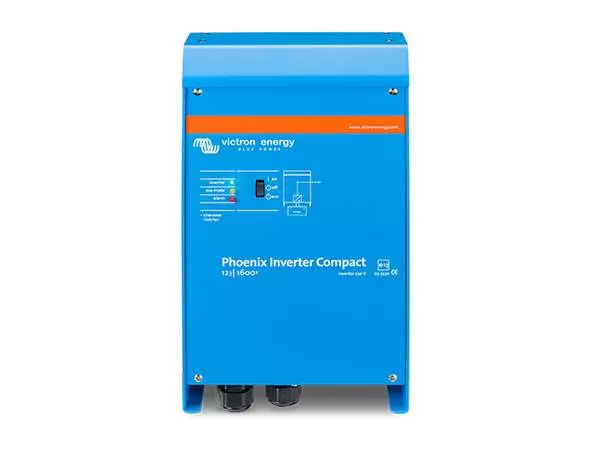Harnessing the sun’s power has never been more popular, and for good reason. As solar energy technologies advance, many homeowners turn to grid tie inverter as a critical component of their solar power systems. These devices enhance efficiency and unlock a world of benefits that can transform how you use energy at home. Imagine generating your electricity while simultaneously reducing your reliance on traditional energy sources. A grid tie-inverter makes this possible by seamlessly connecting your solar panels to the electric grid.
Maximizing Solar Efficiency: Benefits of Using a Grid-Tie Inverter
A Grid-Tie Inverter plays a pivotal role in maximizing the efficiency of your solar power system. Converting direct current (DC) energy from solar panels into alternating current (AC) allows for seamless integration with the grid. This connection enables you to use solar energy while accessing utility power when needed.
One significant advantage is that any excess electricity generated can be fed back into the grid, often earning you credits or payments through net metering programs. This means more savings on your energy bills and less reliance on non-renewable sources.
Moreover, modern Grid-Tie Inverters come equipped with advanced monitoring features. These tools help track performance metrics and optimize output, ensuring you get the most out of every ray of sunlight that hits your panels.
How a Grid-Tie Inverter Enhances Your Solar Power System’s Performance
A Grid-Tie Inverter optimises your solar power system’s performance. It converts the direct current (DC) generated by solar panels into alternating current (AC), which is essential for household use and compatible with the electrical grid.
This inverter synchronizes with the grid to allow excess energy to flow back, enabling homeowners to offset their utility bills. Any surplus generated during sunny days can be channelled into the grid, providing credits that benefit you later.
Moreover, advanced features like MPPT (Maximum Power Point Tracking) ensure that you’re always getting maximum efficiency from your solar panels. This technology adjusts voltage and current to capture optimal energy production, even on cloudy days. With a reliable grid tie-inverter, you enhance both sustainability and savings while enjoying seamless integration with existing energy systems.
The Top Benefits of Integrating a Grid-Tie Inverter with Your Solar Setup
Integrating a grid tie-inverter with your solar system can offer a range of benefits, from increasing energy efficiency to saving money on electricity bills. A Grid-Tie Inverter lets you connect your solar setup to the electrical grid, enabling you to either draw from the grid when necessary or feed excess power back for compensation. Here are the top benefits of integrating a Grid-Tie Inverter with your solar setup:
Maximized Energy Efficiency
A grid tie-inverter helps optimize the energy production of your solar panels by ensuring that the electricity generated is synchronized with the utility grid. This allows for seamless energy conversion and minimizes energy losses, ensuring your solar system operates efficiently.
Cost Savings Through Net Metering
One of the significant advantages of a Grid-Tie Inverter is the ability to participate in net metering. This allows you to return excess electricity to the grid in exchange for credits on your utility bill. This process can lead to significant cost savings, mainly when your solar system produces more energy than you need.
Reduced Dependence on the Grid
With a Grid-Tie Inverter, your solar system becomes a reliable power source for your home or business, reducing your dependence on the electrical grid. While you can still access grid power during cloudy days or at night, the inverter lets you use solar energy whenever available, lowering your overall electricity consumption.
Environmentally Friendly Energy Solution
By integrating a grid tie-inverter with your solar setup, you contribute to reducing your carbon footprint. Using clean, renewable energy from your solar panels rather than relying on fossil-fuel-based power helps decrease greenhouse gas emissions and supports sustainability efforts.
Unlock the Full Potential of Your Solar Power System with a Grid Connected Inverter
Harnessing the full potential of your solar power system is more accessible. A Grid Connected Inverter plays a crucial role in converting your solar panels’ direct current (DC) into alternating current (AC). This conversion allows you to utilize the energy directly for your home or business.
Connecting to the grid can also feed any excess electricity back to it. This means that during sunny days, when your system produces more power than you need, you’re not wasting that energy. Instead, it gets sent to the grid where others benefit.
Moreover, with net metering policies available in many regions, you’ll receive credits for surplus energy fed back to the grid. These credits further enhance savings on future utility bills and contribute positively toward renewable energy goals.
How a Grid-Tie Inverter Can Help You Save on Energy Costs
A grid tie-inverter plays a crucial role in reducing your energy expenses. Converting the direct current generated by your solar panels into usable alternating current allows you to feed excess electricity back into the grid. This process maximizes your system’s efficiency and enables you to earn credits on your utility bill.
Those extra kilowatt-hours can offset future costs when you’re producing more energy than you consume. As a result, any surplus power turns into savings over time. You don’t rely solely on stored energy; you’re actively engaging with the grid for financial benefits.
Furthermore, these inverters often have monitoring capabilities that help manage and optimize consumption patterns. Knowing when to use or store energy enhances overall savings and fosters smarter decisions regarding home power usage.
The Role of a Grid-Tie Inverter in Optimizing Solar Energy Utilization
A grid-tied inverter plays a crucial role in maximizing the efficiency of solar energy systems. It converts the direct current (DC) generated by solar panels into alternating current (AC), which is compatible with the electricity grid. This conversion process ensures that solar power can be used immediately or fed back into the grid, enhancing overall energy utilization.
A Grid-Tie Inverter helps balance your solar system and local utility sources by synchronizing with grid voltage and frequency. This means you can draw additional power during peak usage times without interruption, ensuring consistent energy availability for your home.
Moreover, these inverters often come equipped with monitoring features.
Why a Single Phase Inverter Is the Best Choice for Your Solar Power System
The inverter choice can significantly impact performance when considering a solar power system. A Single Phase Inverter is often ideal for residential setups because it’s specifically designed to handle the electricity needs of most homes efficiently. This type of inverter fits well with standard household appliances and can manage energy flow without complications.
Single-phase inverters are typically more affordable than their three-phase counterparts, making them an attractive option for homeowners looking to maximize their investment. They also require less complex installation, resulting in lower labour costs and quicker setup times.
Moreover, if your energy consumption patterns align with the output capacity of a single-phase inverter, you’ll benefit from seamless integration into your existing electrical system.
Key Benefits of Using a Grid-Tie Inverter for Efficient Solar Energy Use
A grid tie-inverter plays a crucial role in maximizing the efficiency of your solar energy system. It allows seamless integration with the electrical grid, enabling you to use solar power as needed while returning excess energy. This not only optimizes your energy consumption but also helps to reduce waste.
Another critical benefit is financial savings. By using a Grid-Tie Inverter, homeowners can take advantage of net metering programs offered by utilities. This means any surplus electricity generated can be credited towards future bills, making it a cost-effective solution for long-term energy needs.
Moreover, reliability is heightened with this technology. Grid-tie inverters ensure that your system operates at peak performance regardless of weather conditions or fluctuations in sunlight.
How a Grid-Tie Inverter Connects Your Solar System to the Grid for Maximum Benefit
A Grid-Tie Inverter is crucial in connecting your solar power system to the electrical grid. It converts the direct current (DC) generated by your solar panels into alternating current (AC), which is compatible with the energy supplied by utility companies. This seamless conversion allows for efficient energy use.
When your solar setup generates more electricity than you need, the inverter sends excess energy back to the grid. This process helps reduce your electricity bills and earns you credits or payments from utility providers in many regions.
In times of low sunlight, such as cloudy days or nighttime, a Grid-Tie Inverter enables you to draw energy from the grid when needed. This ensures you’re continually supplied with power while maximizing the benefits of using renewable resources like solar energy.
Why Single Phase To 3 Phase Inverter is the Smart Investment for Your Solar Power
Upgrading from a Single Phase To 3 Phase Inverter can significantly enhance the efficiency of your solar power system. Three-phase inverters distribute energy more evenly across multiple circuits, reducing electrical losses. This ensures that your solar panels operate at optimal capacity, maximizing energy production even during peak demand times.
Investing in a three-phase inverter is especially beneficial for larger homes or commercial setups requiring higher energy outputs. They efficiently handle heavier loads and stabilise the electrical supply, which means fewer interruptions and better performance overall.
Moreover, switching to a three-phase system enhances flexibility when adding future appliances or renewable devices. As your energy needs grow, this investment allows for smoother integration into existing systems without compromising overall performance.
Conclusion
Investing in a grid tie inverter can fundamentally change how you harness solar energy. These devices not only bolster efficiency but also enhance the overall performance of your solar power system. With benefits like cost savings and optimized energy usage, embracing this technology is bright. Homeowners looking to maximize their solar output will find that integrating a Grid-Tie Inverter offers significant advantages. As renewable energy continues to gain traction, understanding its components becomes increasingly vital.
FAQs
What exactly is a grid tie inverter?
A grid tie inverter converts the direct current (DC) generated by your solar panels into alternating current (AC), which can be used by your home or fed back into the electrical grid. This process enables homeowners to utilize solar energy effectively while minimizing waste.
How does a Grid-Tie Inverter save me money?
You can earn credits on your utility bill through net metering by allowing excess electricity from your solar system to be sent back to the grid. This offsets costs and maximizes the efficiency of your entire energy setup, ensuring you’re getting the most out of every sunlit day.
Is a single-phase or three-phase inverter better for my needs?
The choice depends on your specific requirements. Single-phase inverters are typically best suited for residential applications with lower energy demands, while three-phase inverters offer more extraordinary performance and efficiency for larger installations or commercial use. Assessing your energy usage will guide you toward the right decision.
| Related Business Listings |
| Contact Directory |
| Local Business Profiles |




